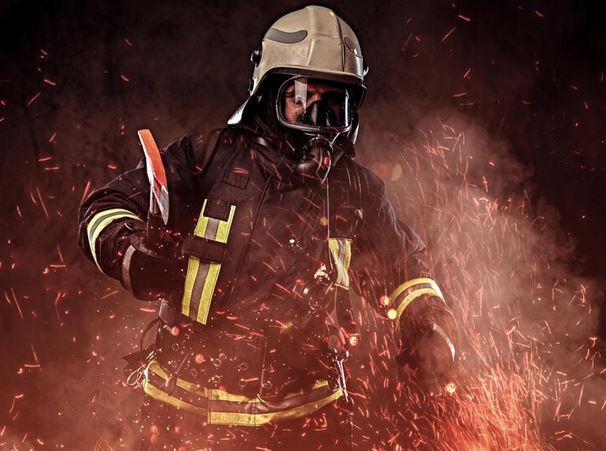Introduction
Fire safety is not just a regulatory requirement but a critical aspect of maintaining a secure environment for employees and customers alike. Businesses must be proactive in implementing fire safety measures to safeguard lives and property. This article delves into various aspects of fire safety, including the importance of fire extinguishers, sprinkler systems, kitchen fire suppression, and emergency lighting. By understanding these components, businesses can foster a culture of safety that minimizes risks and enhances preparedness.
The Importance of Fire Extinguishers
Fire extinguishers are a fundamental part of any fire safety plan. They serve as the first line of defense against small fires before they escalate into larger, more dangerous situations. The presence of the right type of fire extinguisher in strategic locations can make a significant difference during a fire emergency.
There are various types of fire extinguishers, each designed for specific classes of fire. For instance, Class A extinguishers are suitable for ordinary combustibles such as wood, paper, and cloth, while Class B extinguishers are meant for flammable liquids like gasoline and oils. Class C extinguishers, on the other hand, are essential for electrical fires, and Class K extinguishers are specifically designed for kitchen fires involving cooking oils and fats. Ensuring that your business is stocked with the appropriate fire extinguishers is crucial, but it is equally important to conduct regular inspections and maintenance to ensure they are always in working order.
Regular training for employees on how to use fire extinguishers effectively can save lives. Conducting fire drills and educational sessions about fire safety can empower employees to act confidently and swiftly in the event of a fire. This training should include recognizing different fire types and knowing which extinguisher to use for each fire class. With effective training and the right equipment, businesses can significantly reduce the risk of fire damage.
Fire Sprinkler Systems: A Comprehensive Protection Mechanism
Fire sprinkler systems are another essential element of fire safety in commercial settings. These systems are designed to automatically detect and suppress fires, providing a crucial layer of protection when an incident occurs. They work by releasing water directly onto the flames, which can help contain the fire and prevent it from spreading rapidly throughout the building.
Understanding the different types of fire sprinkler systems is vital for businesses. Wet pipe systems are the most common and consist of pipes filled with water that are activated by heat, while dry pipe systems contain pressurized air, releasing water only when the air pressure drops due to heat from a fire. Pre-action systems are a hybrid of the two, requiring two triggers—heat and a separate alarm system—to release water. Each type has its advantages and specific applications depending on the nature of the business and the risks involved.
Regular inspection and maintenance of fire sprinkler systems are critical to ensure their functionality. The National Fire Protection Association (NFPA) recommends that these systems be inspected at least annually, with more frequent checks for certain components like alarms and valves. An effective fire safety plan will include not only the installation of a sprinkler system but also a robust maintenance schedule to keep it in optimal condition.
Kitchen Fire Suppression: Protecting Critical Areas
For businesses that operate commercial kitchens, fire suppression systems are essential. Cooking equipment is one of the leading causes of fires in restaurants and food service establishments. Therefore, implementing a reliable kitchen fire suppression system is not just a recommendation; it is a necessity.
These systems are specifically designed to combat kitchen fires, particularly those involving grease and oils. They work by using a combination of water, foam, and chemicals to suppress flames and cool the surrounding area to prevent re-ignition. Regular maintenance of kitchen fire suppression systems is crucial to ensure they function correctly when needed. This maintenance should include inspections of the hoods, ducts, and nozzles, as well as testing the system’s activation mechanisms.
Moreover, training kitchen staff on fire safety protocols is equally important. They should be familiar with the operation of the fire suppression system, understand how to manage grease fires, and know when to evacuate and call for help. Implementing these practices can significantly minimize risks and protect both employees and patrons.
Emergency Lighting and Exit Signs
During a fire or other emergencies, visibility can be severely compromised, making it difficult for individuals to find their way to safety. Properly illuminated exit signs guide employees and customers to exits, while emergency lighting provides illumination in dark areas, helping to prevent panic and injury.
Installing emergency lighting systems that automatically activate during power outages is essential for every business. These systems should be strategically placed throughout the facility, particularly in high-traffic areas and near exits. Regular testing and maintenance of these systems ensure that they will operate effectively in the event of an emergency.
Training employees on emergency procedures, including the location of exits and the operation of emergency lighting, is vital. Conducting regular fire drills can help familiarize staff with evacuation routes and procedures, ensuring they are prepared to respond swiftly and calmly in case of an emergency.
Conclusion
By investing in essential fire safety equipment such as extinguishers, sprinkler systems, and kitchen fire suppression systems, businesses can significantly mitigate risks. Additionally, implementing a robust training program for employees and maintaining emergency lighting and exit signs are crucial strategies for ensuring safety in the workplace.
Business owners must recognize that fire safety is not a one-time effort but an ongoing commitment. Regular inspections, employee training, and system maintenance should be embedded into the company culture to cultivate an environment of safety and preparedness. By prioritizing fire safety, businesses not only comply with regulatory standards but also protect their most valuable assets: their employees and their customers.




 (2).jpeg)

Comments